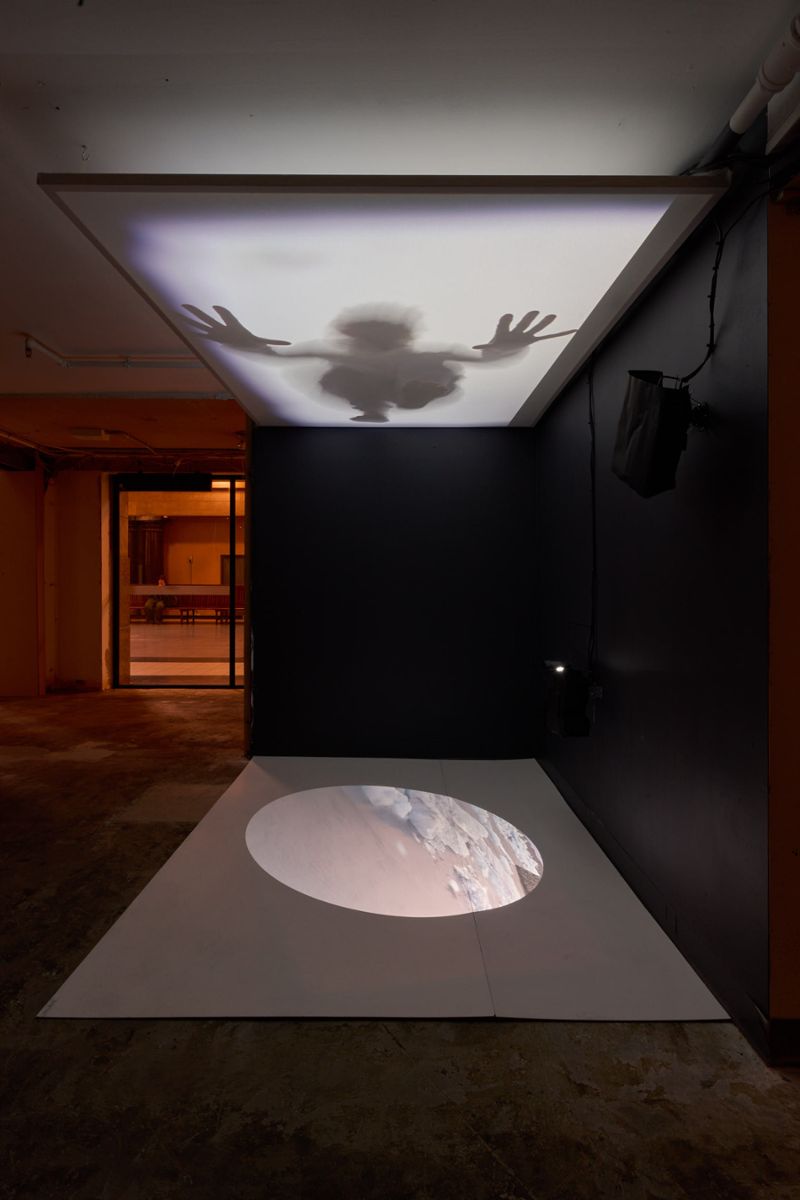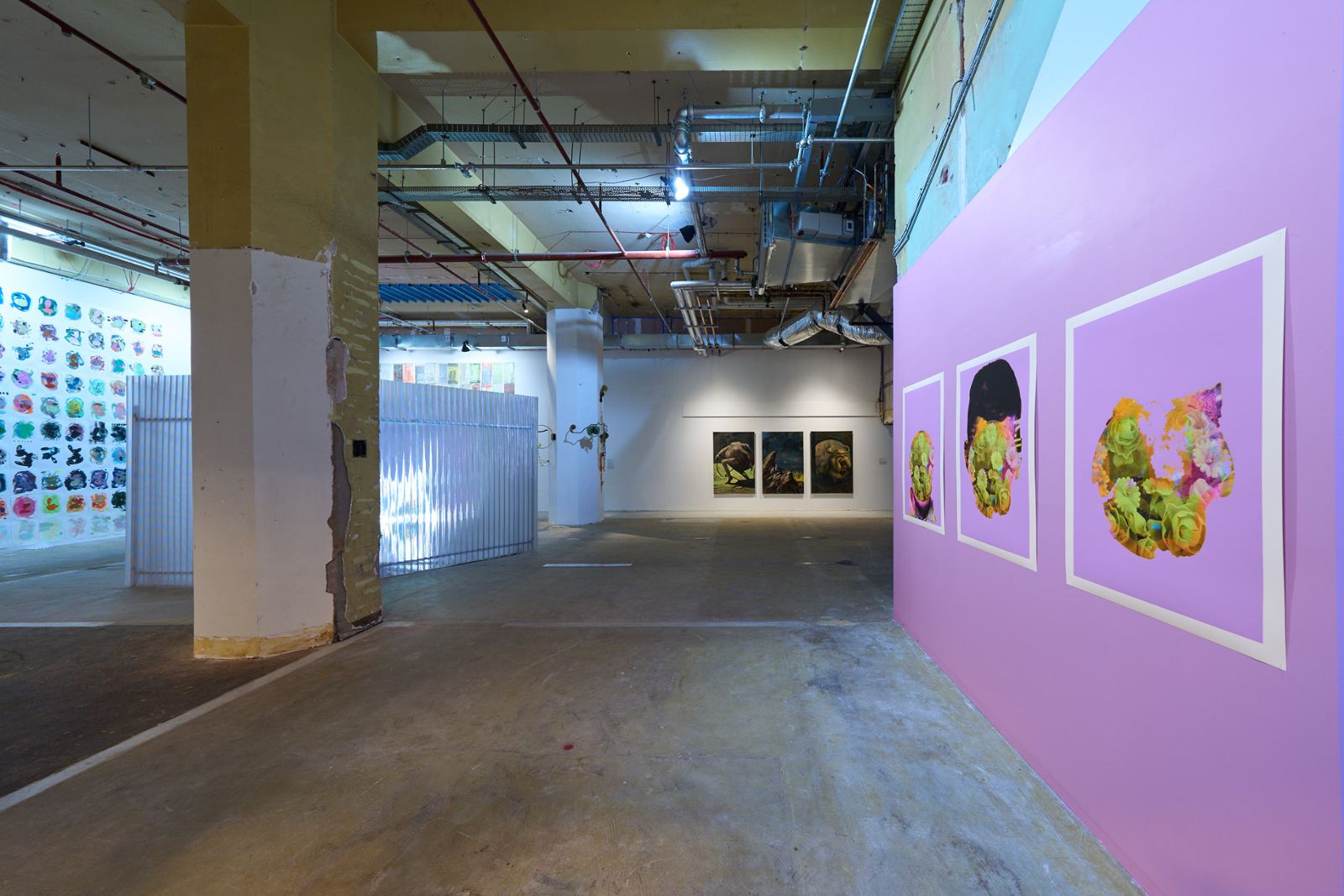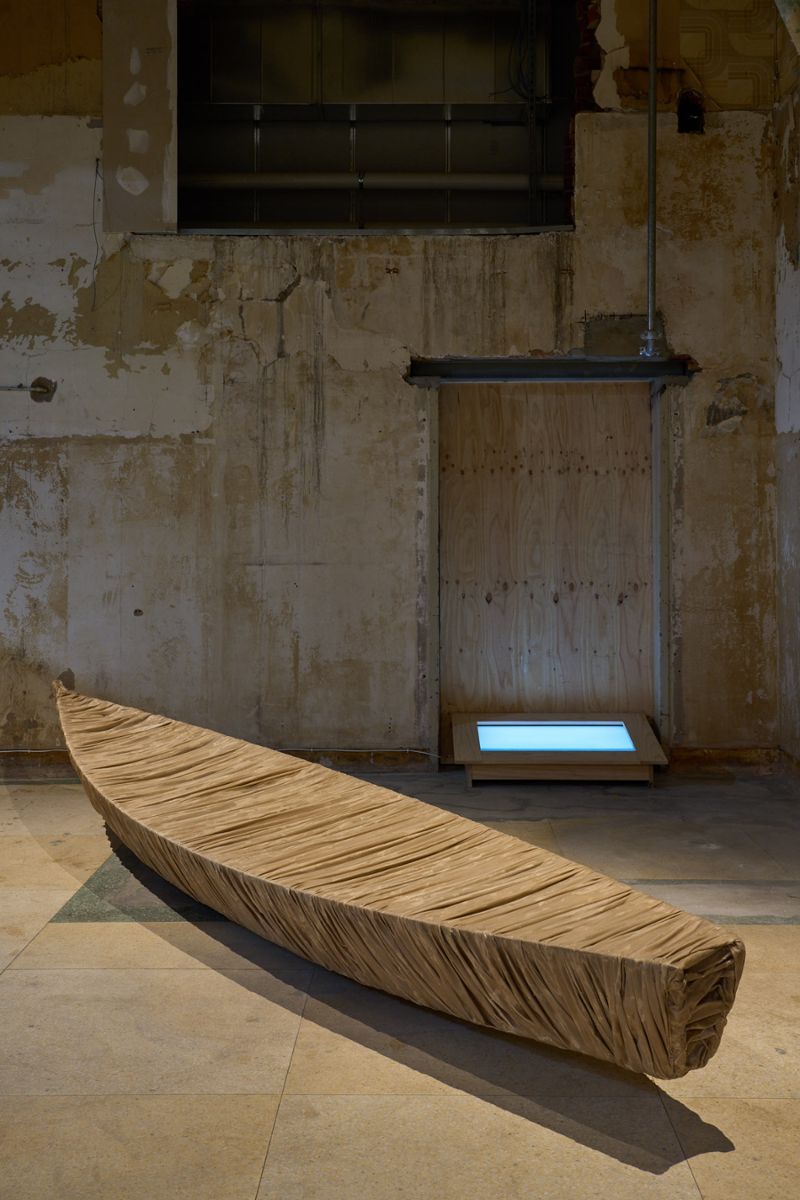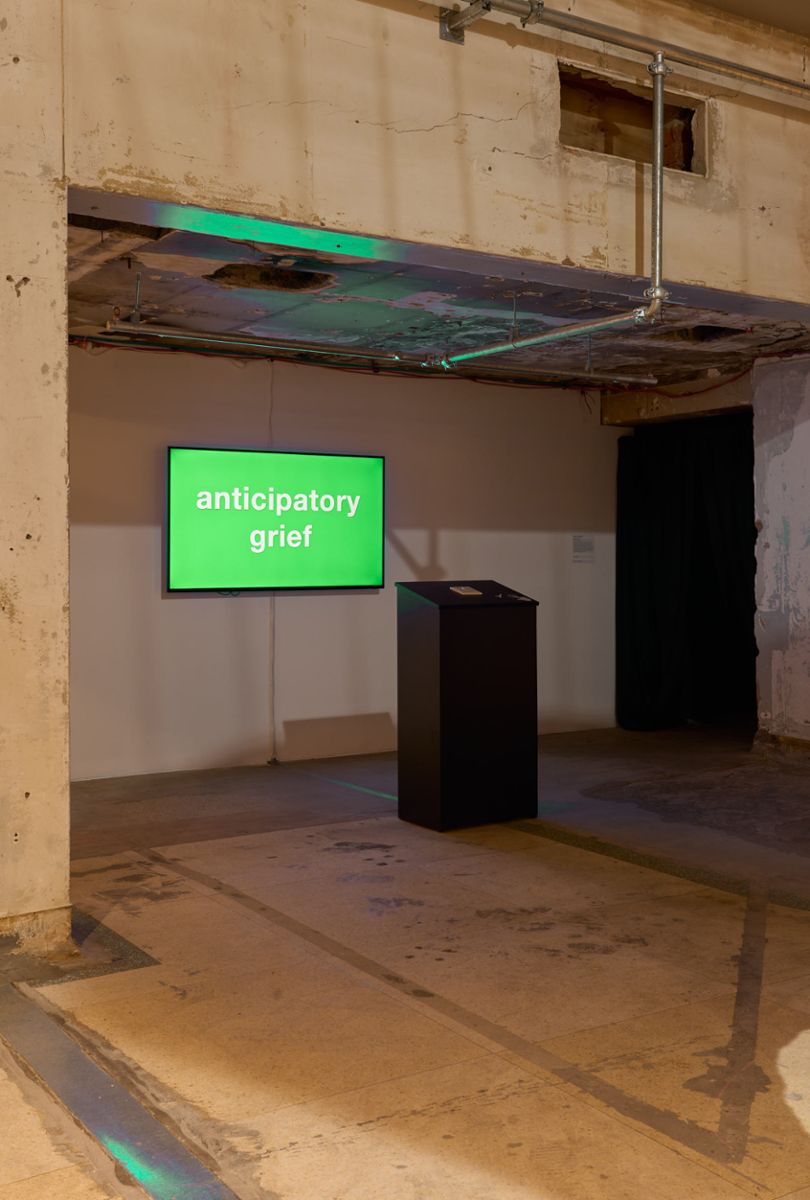
Neoterica, now in its second iteration, is a bold, artist-led initiative that brings together the work of twenty mid-career South Australian artists, accompanied by a catalogue featuring twenty South Australian writers, in a cavernous space at the Adelaide Railway Station.
As an exhibition with no curatorial brief, it is the crumbling subterranean hall itself that unites the varied and diverse works that bear out each artist’s current interests and inclinations. This context–being ‘underground’–helps position the exhibition as an alternative forum within the current proliferation of arts offerings locally, including the Adelaide and Fringe Festivals, as well as nationally, the 24th Biennale of Sydney and NGV Triennial running concurrently. Just up the road on North Terrace the Art Gallery of South Australia hosts the Adelaide Biennial of Australian Art: Inner Sanctum, now in its eighteenth year, ‘the nation’s longest-running survey of contemporary Australian Art.’[1] While Neoterica is still the new kid on the city block, its artists explore enduring concerns in their work that connect to deep histories and potential futures.
In Italian, Neoterica is the feminised term for new, capturing the currency of ideas on display. It also suggests the potential for creativity inspired by the unrepresentable, overlooked or outright ignored feminine or feminised experience. Many of the artists here powerfully explore care, human relationships, environmental grief, mothering, love and loss. Certainly, project lead and curator Ray Harris has worked with an almost-all female and non-binary cast of arts workers, who she champions as the productive, creative force behind Neoterica’s success.
Gaston Bachelard writes that home is the first universe and this messy cosmos is the site of Fran Callen’s works.[2] Recording the family’s everyday orbit around the table top, Callen captures in plaster and paint-skins what British artist Felicity Allen may have meant by Disoeuvre, ‘an oeuvre not easily recognised as one… an artist sustaining a practice, despite and in response to contingency.’[3] If Marcel Duchamp was one of art’s heroes then in Callen’s objects we also witness the heroic, the guts and humble glory of the everyday, where cutlery, soft toys and egg shells are the readymades.
Nearby, Sonja Porcaro’s work, Il passaggio/Passage (2023-24), also speaks of family, particularly the lives of her migrant parents and the gifts they gave her, through a material investigation of familial history. In the accompanying catalogue essay, writer Marie Falcinella explains how Porcaro’s materials, mesh ‘bricks’, raw wooden frames and structures that recall simple toys and wooden cotton reels sourced from second hand stores, which ‘speak to the labour of her parents and grandparents.’[4] These elements are carefully stacked to a tenuous balance, each component holding its own against time and gravity.

Keith Giles explores arrival, belonging and identity in his triptych, Immortelle – a self portrait III (1967-2024). The purple and neon work is based on a school photo taken when he was eight years old, recently arrived in Australia from England, the first indexical record of his out-of-placeness. Giles revisits this photograph hundreds of times throughout his career, always obscuring the face, in this case with images of immortelles – plaster and tin floral arrangements left on graves as lasting tributes. Giles says this work is not about death but about ‘duality and renewal’, in an ongoing project against the erasure of the self.[5]
In the southern most end of the space Riza Manalo’s Homage to the Unknown (2023-24), is a poem to the hopeful act of striking out towards new land. But the shrouded boat, bought from a dead man, wrapped in calico and wax, may also be a memorial to countless lives lost on an endless, rising ocean. Adjacent to Manalo’s work, the screen-based work of Raymond Zada, Gone (2024), reflects on the failings of language in the event of the death of a loved one, the way meaning falls out of words as we avoid confronting death’s inevitability. By offering viewers a switch to speed up the impending transition from one state of being to another, Zada choreographs our emotions around witnessing time, death and grief, all of which eventuate regardless.

Grief and time are at the forefront of Gail Hocking’s video installations Through a Looking Glass Darkly A and B (2024). Human time–as embodied by Hocking herself, struggling to get comfortable against the cinematic ceiling installed above our heads–is made insignificant in relation to the deep glacial time visible in the footage of arctic floe at our feet. Hocking moves in ripples; we feel suspended in the liquid eons and alive to time’s melting. There is a propositional nature to Hocking’s installation, with black paper covered projectors and cables visible against the cold light emanating from the ice. Finally, we are brought home by Jenn Brazier, whose work reveals the enduring beauty of the natural world in the urban landscape of the Anthropocene. Reverence (2024), a large-scale photographic print flanked by golden curtains, presents a crepuscular landscape on the edge of the city, a world of velvety blues and greens punctuated by man-made light as the last of the sun’s light fades to darkness.
Other artists featured are concerned with, for example, Greek tragedy and its losers (Kate Kurucz), mental illness and the wellness industry (Makeda Duong), and women’s representation in visual culture (Sarah Tickle), all of which indicates a sprawling curatorial premise. Whether these ideas are new or rather the recuperation of neglected narratives, Neoterica is rightly celebrated as a new entity in the arts calendar in South Australia. With the State Government’s cultural policy currently under review, and the interminable indecision over the empty space on North Terrace, it seems that if we want to know where we have been and where we are going, we would do well to ask the artists and poets.

Footnotes
- ^ Rhana Devenport, ‘Foreword,’ Inner Sanctum (Adelaide: Art Gallery of South Australia, 2024).
- ^ Gaston Bachelard, The Poetics of Space, translated from the French by Maria Jolas (Beacon Press, 1994), viii.
- ^ Felicity Allen, The Disoeuvre, website accessed 20 March 2024.
- ^ Marie Falcinella, Neoterica, exhibition catalogue, 2024, p36.
- ^ Keith Giles, ‘Artist Talk,’ Neoteric, Adelaide, 16 March 2024.
